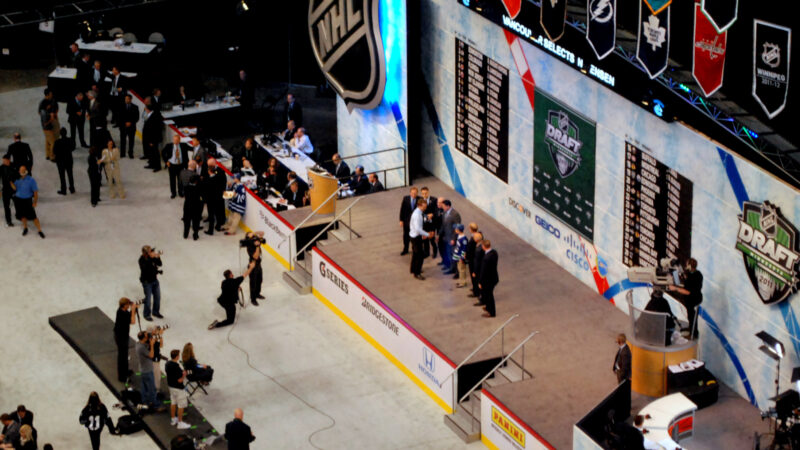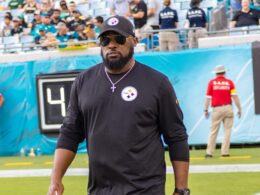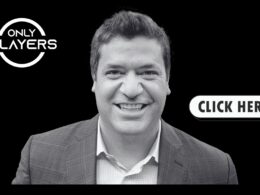By Trevor Roughan
The NHL Draft Lottery is a process in which teams that did not make the playoffs the previous season have a chance to win the top draft pick, giving them the opportunity to select the most promising young talent in the draft pool. The lottery system has been in place since 1995, with the objective of reducing the incentive for teams to intentionally lose games to secure the No. 1 overall pick. However, this system has been criticized for being susceptible to manipulation.
On May 8, 2023, the NHL held its annual draft lottery in Secaucus, New Jersey. This year was different from most of its predecessors, as the consensus first-ranked prospect, Connor Bedard, has been labeled as “generational” and “the best since Connor McDavid.” In other words, winning the lottery, this year especially was perceived as a very big deal. After the first 13 draft positions were established, only three franchises remained in contention for the first overall pick and the right to select Bedard. This grouping included two small-market teams: the Columbus Blues and Anaheim Ducks, as well as the big-market Chicago Blackhawks. The order of the top three would be announced after a brief commercial break.
Immediately after cutting to the break, ESPN inexplicably broadcasted a graphic with paired audio, announcing the Columbus Blues were to pick third overall in the upcoming draft. Then, chaos ensued.
For good reason, the error caused many viewers to question the legitimacy of the NHL Draft Lottery as a whole. If the NHL had its choice of where Bedard would begin his professional career, Chicago is the clear landing spot ahead of Anaheim and certainly Columbus, Ohio. Every sports league on the planet wants its biggest stars to play in its biggest markets because of the significantly increased revenue and fanfare such a situation would net the league itself. Kobe Bryant would have likely been a superstar if he played his entire career with the Portland Trailblazers, but the glitz, glamour, and media circuit in Los Angeles allowed him to blossom into an icon.
Beyond motive and a broadcast error, why else would so many people believe the 2023 NHL Draft Lottery was fixed? The answer is simple: precedent.
The 1985 NBA Draft Lottery is cloaked in controversy and represents the best example of another time such an event may have been rigged. The similarities between both lotteries are hard to ignore. The consensus No. 1 overall pick, Patrick Ewing, was viewed as the best basketball prospect in over a decade. Many believed he was a shoo-in to eventually reach the Hall of Fame even before ever stepping on NBA hardwood. Long story short, the New York Knicks won the draft lottery and selected the prized Ewing.
In 1985, the lottery drawing process took place on live television. Commissioner David Stern would pluck envelopes from a large, hollow, transparent orb. Each envelope contained the logo of a different franchise competing in the lottery and each was drawn to establish that year’s draft order. Keen observers of the lottery noticed several inconsistencies. For one, the Knicks’ envelope had one of its corners creased, differentiating it from the rest. Also important to note, before every time he pulled one out, Stern was moving his hand among the contained envelopes far longer and more erratically than ever. Many suspect that the Knicks’ envelope was previously frozen, which would explain its pronounced crease as well as the commissioner’s strange behavior throughout the selection process. Like Bedard to Chicago, the NBA had a similar incentive to award the big-market Knicks a young talent like Ewing. We’ll likely never know for sure if the 2023 NHL Draft Lottery was fixed, but it sure does seem like that’s the case. You know what they say,
“If it looks like a duck, swims like a duck, and quacks like a duck, then it probably is a duck.”
Photo credit: Creative Commons Google Images





